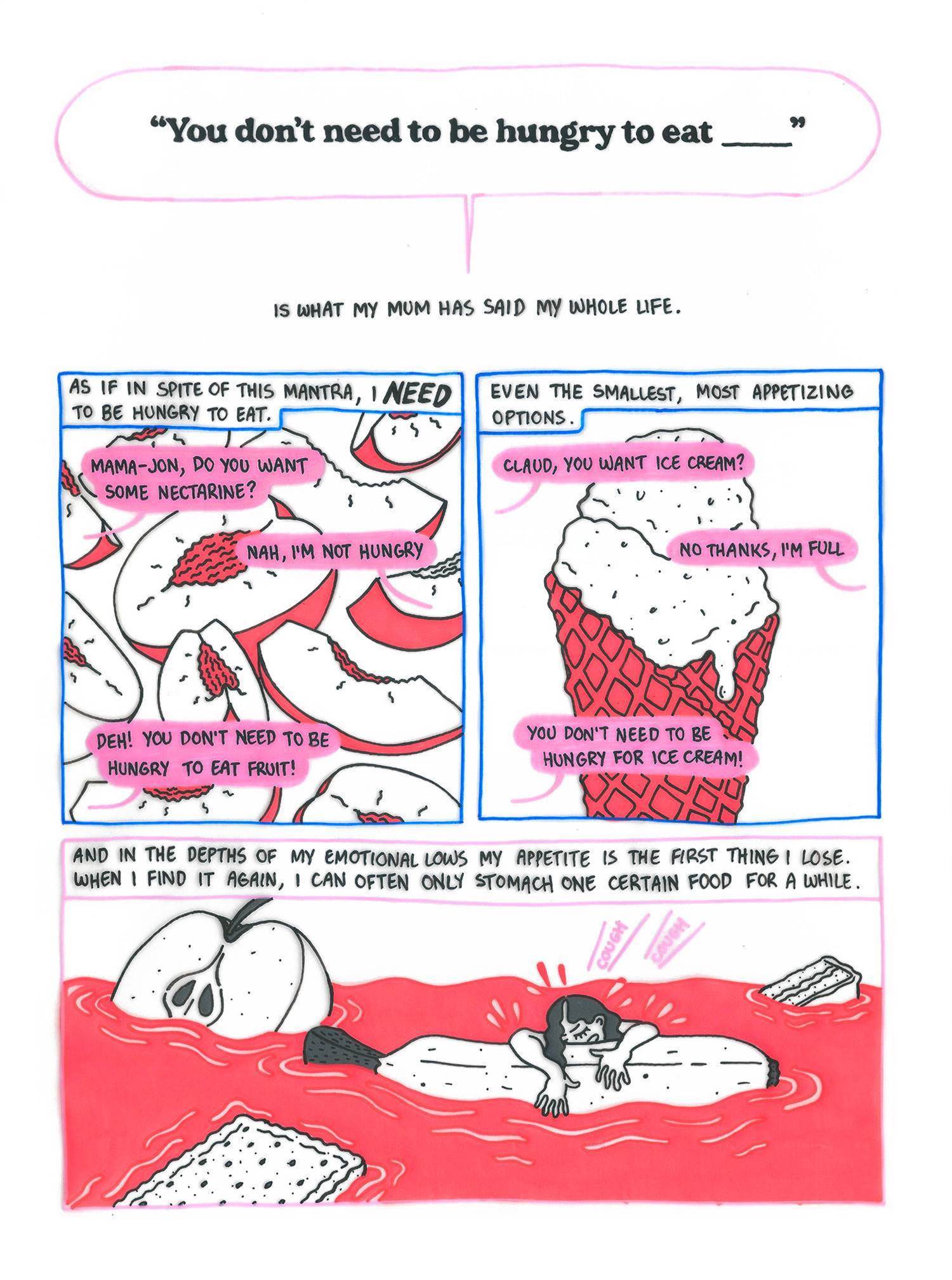word from the wise: how to start making comics
Artist and cartoonist Claudia Chinyere Akole shares her advice for combining words and images. (Spoiler: if you have paper and a pencil, you can make comics!)
Sometimes it’s hard to communicate with just words. For those of us who feel confronted by a giant slab of text, pictures make information just that bit easier to digest. Comics, then, are the perfect blend of both words and images. Those tricky feelings you don’t exactly know how to articulate? You can draw those. Have something to say, but don’t want to put it in an essay? Comics are your friend.
Claudia Chinyere Akole is an illustrator, cartoonist, animator and educator who works as a graphic designer by day and creates comics in her spare hours. She’s a big fan of processing feelings and experiences through her art, and as you’ll soon come to realise, loves the colour pink. We chatted to Claudia about her process and why comics are for everyone (not just superhero enthusiasts). Tell us a bit about your journey to the arts. I’ve been drawing since I could hold a pencil and always loved making art my whole life. By the time I finished high school, I didn’t really have any aspirations or career goals, but art was the only thing I enjoyed, so I scraped my way into a Design (Visual Communication) degree at Western Sydney University.
Tell us a bit about your journey to the arts. I’ve been drawing since I could hold a pencil and always loved making art my whole life. By the time I finished high school, I didn’t really have any aspirations or career goals, but art was the only thing I enjoyed, so I scraped my way into a Design (Visual Communication) degree at Western Sydney University.
Luckily, I actually enjoyed what I was studying – in stark contrast to my feelings about high school. After two years, I transferred to an animation degree at University of Technology Sydney, made a whole bunch of friends, met arty mentors, and started frequenting exhibitions, zine fairs, and the like.
Throughout my years studying, I never stopped making my own work and by the time I got my Bachelors (and wasted half a year in Honours), I’d resolutely decided that I was content making art in my own time and on my own terms, so I didn’t need to work in a creative job and spend all my creative energy on work for others. Since then I’ve persisted with this resolve of making personal creative work, and I’ve been lucky enough to fall into creative-adjacent day jobs with the occasional freelance work.
How did your love for comics begin? I grew up loving games, comics, anime and manga, and around the time I finished high school, my interest in a lot of these waned, but my love for comics persisted. I had a particular love for “indie/alternative/underground” comics, classic strip comics and autobiographical comics, and I spent all my free time and money on reading them. I didn’t actually put two and two together to make comics myself until I graduated from Uni and realised nothing was stopping me from making them!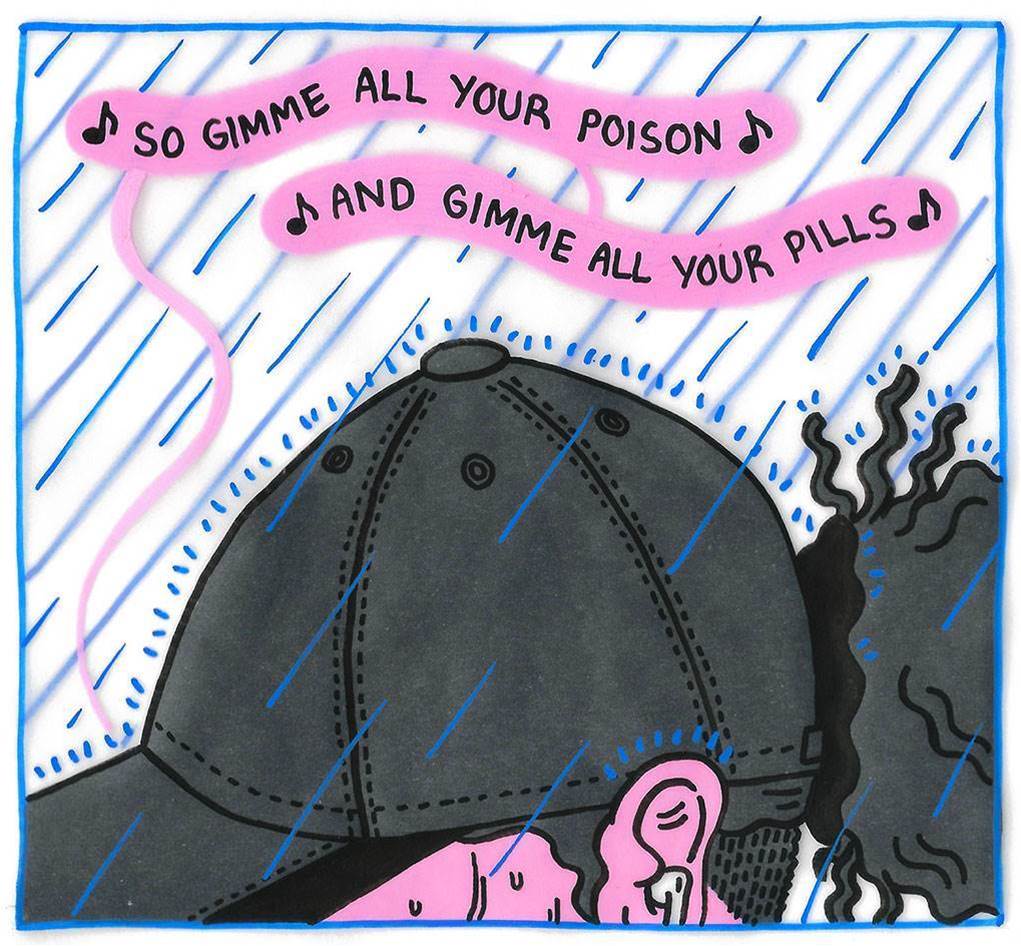
There’s a misconception that comics are all superhero stories or newspaper serials. How varied is the art form? There’s definitely a huge misconception about comics and I know that a lot of this is based on the misunderstanding that comics are a genre, when really it’s a medium.
Comics can be anything that combines words and images in pursuit of communicating a story. And the rules of the medium can be followed or broken to any degree. There’s enough stylistic freedom that a comic can use extremely detailed, illustrative drawings; simplistic or ‘naive’ drawings; be all text-based or have no text at all; be abstract; linear in narrative or non-linear in narrative; have parallel narratives... it’s rad! One of the biggest reasons I love the comic medium is the immense versatility.
Why do you choose to tell stories through comics? The next biggest reason I love the medium is for its accessibility. If you have paper and something to draw on, you can make a comic! Since most of my work is autobiographical or based on my thoughts and feelings, a lot of my comics are an outlet for processing these experiences. And because of the versatility of the medium, I don’t feel pressured about what my work should look or sound like.
What can comics do for audiences that other mediums can’t? Storytelling is something inherent to how humans communicate with each other – it’s an activity as old as we are. Stories are a powerful window to understanding, sympathising and empathising with others.
Comics tap into a unique language of storytelling that isn’t just about the images or the words, but is dependent on the marriage of both. Humans have been telling stories with pictures since forever, because this combination adds layers of meaning to the text that they may not have when just using the written word or just using the image.
The surface-level answer is that it’s also way easier to process information when we have more than a single mode of communication to take in. Stare at a wall of text for four seconds? My brain starts crawling out of my eye sockets. Stare at words where there are also pictures? Strap me in, baby!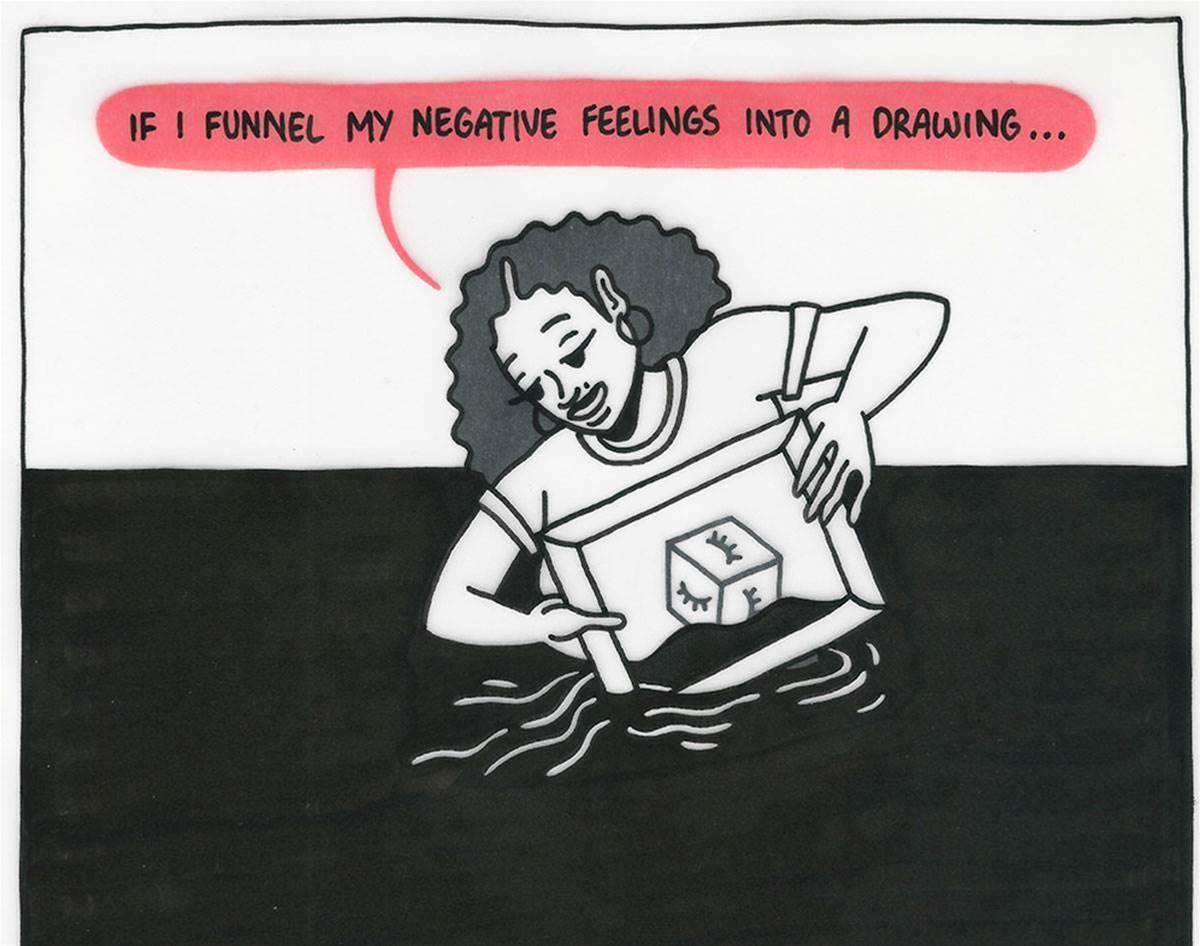 What are the toughest parts about creating a comic? The toughest part of creating comics – especially longer form comics – is the sheer amount of labour it takes to get to the final image. Having to draw and redraw and write and rewrite the same things over and over before getting to completion.
What are the toughest parts about creating a comic? The toughest part of creating comics – especially longer form comics – is the sheer amount of labour it takes to get to the final image. Having to draw and redraw and write and rewrite the same things over and over before getting to completion.
This, coupled with the fact that it’s lonely, solitary work. You can’t really compartmentalise or outsource any of the process, so I’m usually standing at my desk bent over a page, internally muttering to myself about how no one cares about what I’m making and it’s pointless.
And what’s the best part of the process? Feel free to burn me for this, but my favourite part is the sheer amount of labour it takes to get the final image. At the heart of everything I create is a fundamental love of drawing. I love making something real and tangible with my own two hands.
I love the feeling of running a marker over a piece of paper. My entire personal art practice is based on a deep love and enjoyment of the process. I don’t put any weight on the final product, because the act of creating it is what I’m here for.
What are your tips for finding a story to draw? The answer to this of course depends on what kind of stories you want to tell. The realms of developing a piece of fiction from scratch or adapting a piece of non-fiction for a comic will obviously vary, but a tried and true method of generating ideas in any creative medium is keeping a sketchbook and/or journal.
Most of my work is based on my personal experiences, and creating work is part of how I process my thoughts and emotions. A lot of the time, I’ll scribble down a bit of writing or a doodle in a journal or sketchbook and then have it as a point of reference. Observing the world around you and documenting it religiously is the best way to retain its integrity. With that said, one important question to ask yourself when you want to tell a story is “Why do I need to tell this story?” Pondering the answer to that will either drive you or give you reason to pause and reassess.
Take us through your typical process for creating a comic. I always write the script for comics before I do anything else. This may sound intimidating, but the most important thing about translating an idea onto a page is...putting it on a page. I’m not a trained writer – I’m just a hopeless romantic at heart, so I word-vomit the entire thing, without thinking of consistency or flow or narrative structure. Since I like suffering, I usually write everything by hand in my notebook. I also do this because screens suck. The glowing rectangle has taken enough from me already.
The second step is to edit. Take your word-vomit and polish it into a legible piece of writing. Ask yourself: am I actually repeating myself two lines in a row? Does this even make sense at a base level? What can I cut out while still making sense?
Step three is when I start sectioning the writing into bits for panels and pages. Again, since I write by hand, I’ll draw brackets in the margins to divide sentences and paragraphs. Then sometimes I’ll doodle tiny thumbnails of how many panels I’ll have on a page.
Classic cartooning practice dictates you draw your panels as a crappy thumbnail first. I’m talking stick figures. The most important thing is to plan how your text will lay. Then you draw the ‘pencils’, which is a cleaner actual sketch of your panels with your text to scale.
The last step is tracing and inking the final art onto a clean page with a lightbox. It sounds like a lot of work (it is), but it’s way easier to work in steps so by the time I’m drawing the final art, there’s no thinking involved. I don’t get stuck weeping over a page for 16 hours because I don’t know what to draw next. I already did the dirty work and I know what to draw because I’d already written the text for each panel.
This is of course a really structured approach for longer comics that are multiple pages. The magic of comics is if it’s a sketchbook diary comic, or an abstract comic, or ANY comic really, you can just pick up a pen and draw it. Nothing’s stopping you.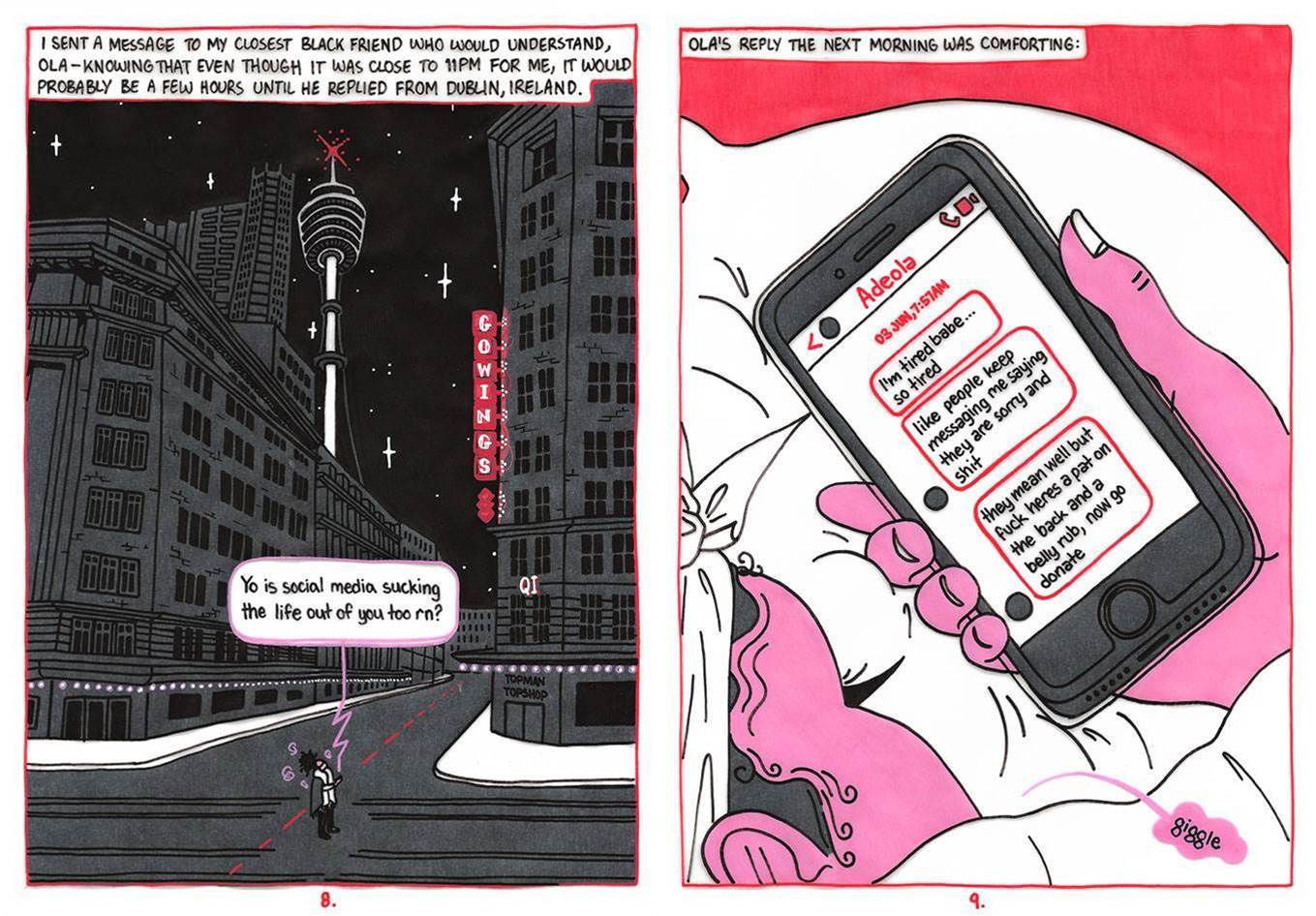
What kind of materials do you use? I create what I call Tracing Paper Comix , which is where I create final comic art on multiple layers of tracing paper. The materials I use for final comic art are POSCA paint markers, tracing paper and coloured Prismacolor pencils, paper, and pens for the process work.
Do you have any recommendations on what to read if you want to learn more about making comics? Lynda Barry is a fantastic resource for approaching the process of creating without placing all the focus on the end result. Her book What It Is is about drawing and writing and helped me shake off the expectation-riddled, self-doubting mess that I'd become during my studies in a creative degree. She also released a book called Making Comics this year, which I haven’t read yet, but I’m sure is fantastic.
The biggest teacher for me, though, is the sheer breadth of comics I’ve read. I’m too busy these days, but I used to breeze through comics and anthologies every single day for years. Nothing will teach you how to make work better than work you like.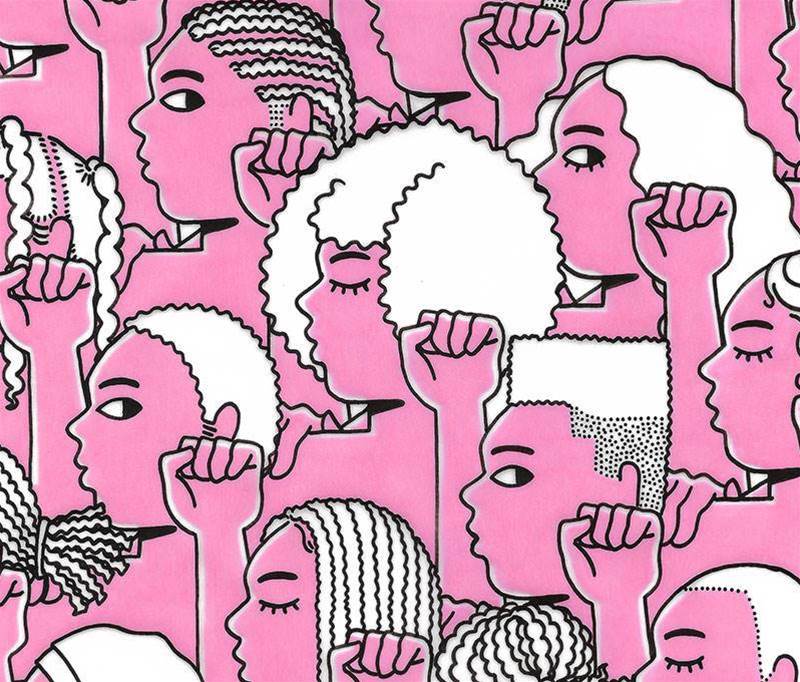 Who are some of your favourite comic artists that we should follow? While a lot of my favourite artists make comics, I love art in every medium so a lot aren’t exclusively cartoonists.
Who are some of your favourite comic artists that we should follow? While a lot of my favourite artists make comics, I love art in every medium so a lot aren’t exclusively cartoonists.
Bigger, well-known ones include Lynda Barry, Richie Pope, Ben Passmore, Tommi Parish, Lenworth McIntosh, Sammy Harkham, Freddy Carrasco, Gyimah Gariba, Thi Bui, Woshibai and Simon Hanselmann.
My Aussie favourites are Meg O’Shea, Sarah Firth, Samuel Luke Beatty, Natalia @sousauello, Lee Lai, Jin Hien Lau, Bailey Sharp, Ben Juers, Pat Grant, Fionn McCabe and Safdar Ahmed.
An honourable mention to the OG gals from The Art Hags/Hag Magazine, a Sydney art collective of which I am a part: Ella Sanderson, Georgette Stefoulis and Nell (@papagrumbus). And lastly, I also help organise a live comic reading event in Sydney called Read To Me. We haven’t been able to run live events this year but we still exist, I promise!
Any other tips or words of wisdom you’d like to share with budding comic artists? First, never ever chuck all-nighters. You’ve got one brain and one body and no deadline is worth more than your sleep. Snakes will manifest in your house and they will all have my face if you chuck an all-nighter. Lastly, there will never be a right time. Just start.
See more from Claudia on Instagram or at her website.